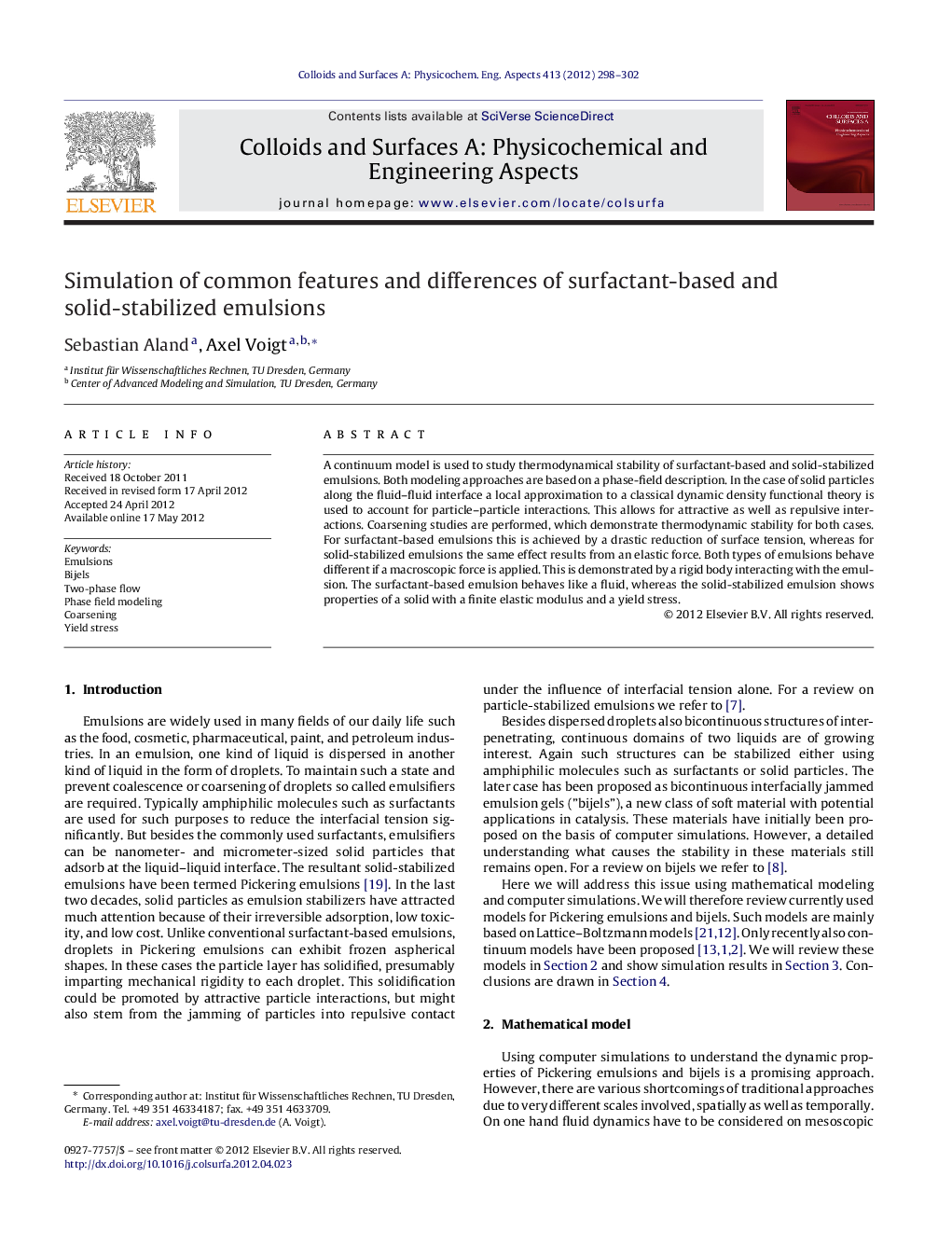| Article ID | Journal | Published Year | Pages | File Type |
|---|---|---|---|---|
| 6980017 | Colloids and Surfaces A: Physicochemical and Engineering Aspects | 2012 | 5 Pages |
Abstract
A continuum model is used to study thermodynamical stability of surfactant-based and solid-stabilized emulsions. Both modeling approaches are based on a phase-field description. In the case of solid particles along the fluid-fluid interface a local approximation to a classical dynamic density functional theory is used to account for particle-particle interactions. This allows for attractive as well as repulsive interactions. Coarsening studies are performed, which demonstrate thermodynamic stability for both cases. For surfactant-based emulsions this is achieved by a drastic reduction of surface tension, whereas for solid-stabilized emulsions the same effect results from an elastic force. Both types of emulsions behave different if a macroscopic force is applied. This is demonstrated by a rigid body interacting with the emulsion. The surfactant-based emulsion behaves like a fluid, whereas the solid-stabilized emulsion shows properties of a solid with a finite elastic modulus and a yield stress.
Related Topics
Physical Sciences and Engineering
Chemical Engineering
Colloid and Surface Chemistry
Authors
Sebastian Aland, Axel Voigt,
